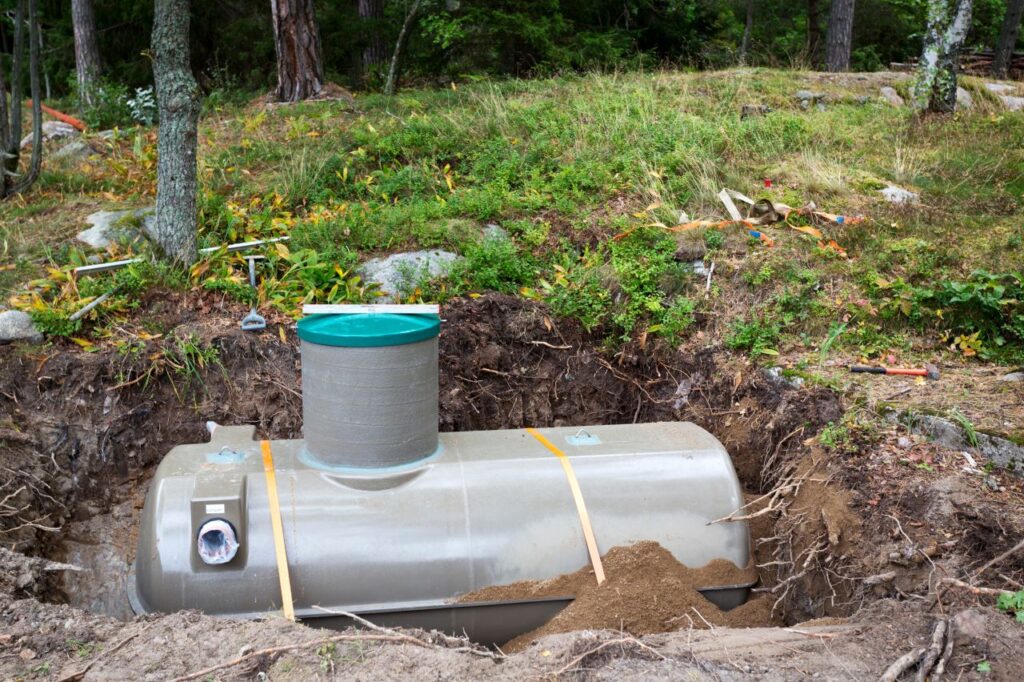Conventional septic systems are a type of wastewater system commonly used in areas with no or limited access to a centralized sewage system. They are designed to safely dispose of household wastewater and waste from showers, toilets, and sinks. Knowing how they work and what to consider when installing one can help ensure your home’s septic system is working as it should.
What is a Conventional Septic System?
A conventional septic system is an individual wastewater system that uses a combination of pipes, a septic tank, and an absorption area. The tank collects wastewater from the homes’ drains and separates the solids from the liquid, which then flows into either a subsurface or surface-based absorption area. This absorption area helps with further treatment of the effluent before it is released safely back into the environment.
Do I Need a Conventional Septic System?
If you don’t have access to an existing public sewage system in the area, a conventional septic system may be your best choice. Before installing a septic tank, however, you must consult with local health department officials and environmental agencies to ensure that your property is suitable for such a system. The rules and regulations surrounding septic systems vary from region to region, and there may be other factors that need to be taken into consideration when deciding whether or not to install one.
How Does a Conventional Septic System Work?
A conventional septic system works to separate solid waste from liquid waste, by filtering out solids and passing liquid into the soil. The system consists of a septic tank connected to a drain field. Waste enters the tank, where bacteria breaks down the waste and grease. The liquid is then passed through perforated pipes in the ground, where it is further filtered through layers of gravel and soil before being filtered back into the soil or water table.
What Are the Design Considerations of Installing a Conventional Septic System?
When installing a conventional septic system, there are several design considerations to take into account. These include the size and location of the tank, type of soil on the property (such as sandy or clay-based soils), depth and slope of the drain field area, runoff problems, type of vegetation near the tank and drain field, proximity to public drinking water sources, and any possible contaminants in groundwater.
What Maintenance Should be Done to Ensure My Conventional Septic System Keeps Working Optimally?
Regularly maintaining a conventional septic system is essential to ensure that it continues working optimally. This includes inspecting the septic tank and drain field regularly, as well as having professional yearly maintenance and pumping when necessary. In addition, plumbing fixtures should be used responsibly and only high-quality materials should be flushed into the system. Finally, trees or vegetation should not be planted directly above or near the septic system.
Aerobic Septic Systems vs Conventional Septic Systems
Aerobic septic systems are gaining in popularity due to their ability to provide a number of advantages over conventional septic systems. Explore the differences between aerobic and conventional systems, including their design and maintenance requirements, so you can determine which system is right for your property.

What is an Aerobic Septic System?
An aerobic septic system is an advanced type of septic system that uses a combination of water, oxygen, and bacteria to provide treatment for household wastewater. Aerobic systems are designed to maximize the available space on a property by introducing pressurized oxygen-rich air directly into the wastewater tank. The inclusion of air helps to break down solid waste materials, reduce tank volume, and extend the time between servicing intervals.
Advantages & Disadvantages of Aerobic Septic Systems
One of the main advantages of an aerobic septic system is improved performance and efficiency. The combination of pressurized oxygen and bacteria helps to break down solid waste faster than a traditional septic system, reducing the size of the leach field needed by up to 30%. Aerobic systems can also require fewer tank cleanings due to the air introduced into the tank which helps reduce maintenance costs. However, because aerobic systems come with more complex components like oxygen pumps, they tend to be more expensive to install and maintain than conventional septic systems.
Comparing the Costs of each System
When deciding between an aerobic and a conventional septic system, one of the key factors to consider is the cost associated with each type of system. An aerobic system typically costs more than a traditional septic system due to its complicated components and additional pipes and fittings. On the other hand, regular maintenance may be necessary to keep an aerobic system running efficiently over time. A conventional septic system often requires fewer repairs and pumpouts as compared to an aerobic system which can help save money in the long run.
Maintenance & Service Requirements for Each Type of Septic System
Aerobic septic systems require regular maintenance and periodic inspections to ensure they are running efficiently. These inspections must be done by a licensed wastewater specialist who knows how to properly service and maintain the system. A traditional septic system requires periodic pump outs by a professional, but these typically occur at longer intervals than an aerobic system typically requires. It is important to consult your local municipality for the specific regulations related to maintenance and servicing of both types of septic systems.
Conclusion
Both aerobic and traditional septic systems have pros and cons, so it is important to understand how each system works in order to decide which one best fits your property. Consider the size of your property, the local regulations related to water disposal, the number of people who will be using the system, the plumbing layout of your home or business, and the estimated future growth of the area when making your decision. Additionally, research into any additional costs and maintenance requirements specific to aerobic septic systems can help you determine which type of septic system is best for you.

